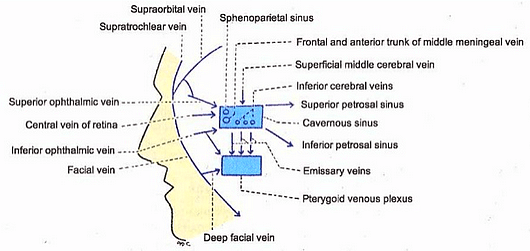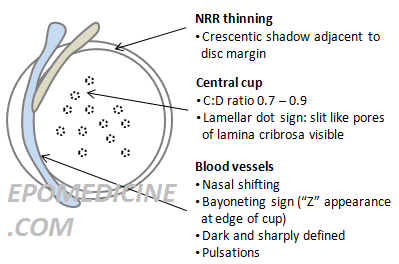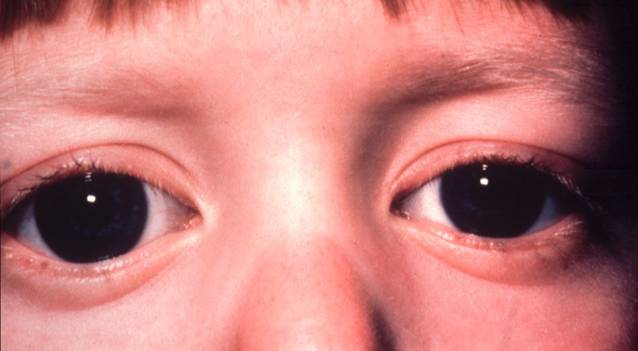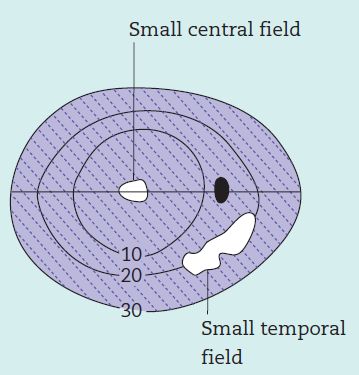Introduction Field of vision or Visual field is defined as the area that is perceived while fixating one central target. According to traquair’s analogy, visual field is “an island of vision surrounded by a sea of darkness”. It is a 3D hill – peak being fovea and at ground level,…
Tag: Ophthalmology

Cavernous Sinus – Simplified
Synonyms: Sinus cavernosus, Lateral sellar compartment Definition and Extent Size: 2 cm long and 1 cm wide Walls: Extent: Contents of Cavernous sinus These are closely related to the floor of sinus and are separated from the interior of sinus by endothelium. 4 nerves in the lateral wall: Note: Mandibular…

Glaucomatous Optic Disc Changes Made Simple
Optic disc changes in Glaucoma is one of the most frequently asked topics in Ophthalmology. However, students are often found to have difficulty in understanding and remembering them. Hence, I came up with an idea to illustrate them with schematic diagrams and mnemonics to simplify the topic. The diagrams are…

Ophthalmology Spot Diagnosis: Buphthalmos
A. Synoynms: Hydrothalmos, Congenital glaucoma B. Definiton: Buphthalmos is the enlargement of the eye due to congenital glaucoma. C. Classification: True congenital glaucoma (Increased intraocular pressure (IOP) during intrauterine life) Infantile glaucoma (Birth to 3 years) Juvenile glaucoma (>3 years) D. Pathogenesis: Isolated trabeculo-dysgenesis: Absence of angle recess; iris inserted…
Acute Dacryocystitis : Clinical review
Definition: Acute dacryocystitis is the inflammation of the lacrimal sac which usually occurs in very young children or > 40 years Microbiology of Acute Dacryocystitis: Congenital: Hemophilus influenzae (acute – rare), Others (chronic) Adults: Acute: Staphylococcus aureus, Beta-hemolytic streptococci Chronic: Streptococcus pneumoniae, Candida albicans Etiology of Acute Dacryocystitis: 1. Congenital:…
Ophthalmology Spot Diagnosis: Nodular Episcleritis
This is a case of nodular episcleritis. Definition of Episcleritis: Episcleritis is defined as the benign recurrent inflammation of episclera and tenon’s capsule. Types of Episcleritis: Diffuse episcleritis Nodular episcleritis Epidemiology: Common in females compared to males Common in young adults Etiology: Non-specific immune response to irritants Idiopathic (mostly) Rheumatoid arthritis…
Ophthalmology Spot Diagnosis: Hyphema
Definition: Accumulation of blood in the Anterior Chamber (AC). Causes: a. Post-traumatic: Trauma or surgery b. Spontaneous: Neovascularization Ocular neoplasms Vascular and clotting anomalies (leukemia, hemophilia, aspirin) Grading for Traumatic Hyphema: 0 : No layered blood, circulating RBCs only (Microhyphema) 1: Layered blood filling < 1/3 of AC 2: Layered…
Glaucoma Basics – Aqueous humor dynamics and Intraocular pressure
Volume of aqueous: 0.25 ml (Anterior chamber) + 0.06 ml (Posterior chamber) Composition of aqueous: similar to plasma except- higher concentration of ascorbate, pyruvate and lactate lower concentration of protein, urea and glucose Functions of aqueous: Maintains Intra-ocular Pressure (IOP) Provides nutrition to avascular lens and cornea Optical transparency Place…
